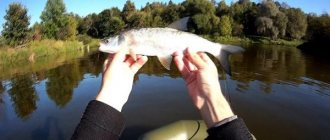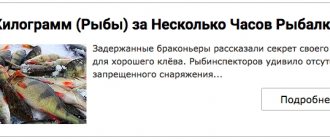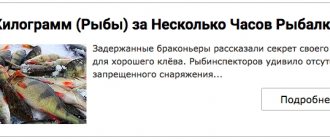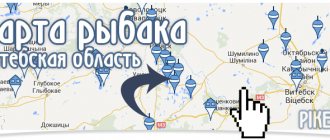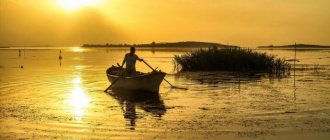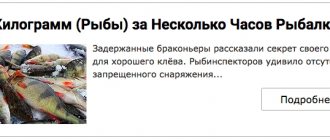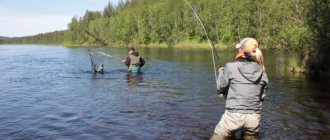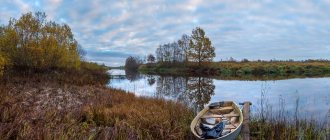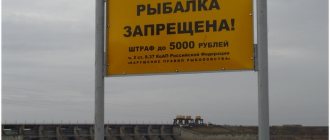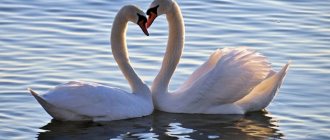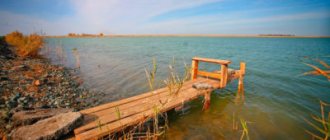Vladimir is part of the group of ancient Russian cities called the Golden Ring. Located in the Moscow region, it is a major tourist center of the Russian Federation. Since ancient times, the city developed intensively and played an important political role. Since the 14th century it has been the capital of the Rostov-Suzdal Principality. Not least important in this was the favorable geographical location and the river, which contributed to industrial development in Vladimir. The relief of Vladimir has a complex shape, mainly of the flat type. The river coastlines are high, and there are an abundance of ravines and meadows along the coast.
Rivers of the Vladimir region
All rivers of the Vladimir region belong to the Volga basin. Their total length is more than 8,500 kilometers; many have an extended network of rivers with a large number of branches. Geographically, there are 115 small rivers in the Vladimir region. The rivers that are considered the most significant in terms of resources needed by the population are the Klyazma and Oka. The Volga-Baltic trade route seemed to be a significant link in the economic, cultural and political spheres. Rivers connected and maintained relations between near and distant lands and the northern and eastern regions. To establish mutually beneficial connections with their southern neighbors, they went from Klyazma to the Oka, and from there to the Volga. The rivers of the Vladimir region were transformed in an economic and cultural direction in order to improve the standard of living of the local population. The main problem of the Vladimir region is the increased level of river clogging. Thermal, agrotechnical and thermal pollution are more common. Reservoirs contain a high percentage of arsenic and mercury. For this reason, the ichthyofauna has decreased ten to fifteen times, and many rivers have become unsuitable for consumption. Currently, activities are being carried out to improve the ecological environment, rivers are being cleared of factory waste and garbage, and reservoirs are being deepened.
Paid reservoirs in the Vladimir region
With the introduction of market relations in the Russian Federation, fisheries were organized on some reservoirs with the provision of paid services for organizing fishing:
- provision of residential holiday houses for fishermen throughout the year;
- rental of boats, equipment, equipment;
- catering (cafes, restaurants) with the possibility of preparing caught fish;
- sale of fishing equipment, groundbait, bait;
- organization of paid parking for cars.
In the Vladimir region, you can use the services of specialized recreation and fishing centers on a paid basis:
- In the suburbs of the city of Kirzhach, on a reservoir with an area of 2 hectares, paid fishing is organized with the provision of convenient places for fishing. You can relax and cook fish in the gazebo using the grill. The base is located 120 km from the city of Vladimir along the Shelkoskoye Highway. In the reservoir you can catch: pike, carp, perch, carp.
- In the suburbs of the city of Gus-Khrustalny there is a fishing and hunting base that provides equipped places for fishing on the Pol and Buzha rivers. The base is especially popular among fishermen in the period from June to September, when the most active species of fish are: perch, tench, crucian carp, tench, ruffe, rudd, loach, tench.
- Fishing area on the Urovka River in the Suzdal region. Paid fishing is organized on an area of 22 hectares with river depths from 2 to 12 meters. At the service of fishermen are paid residential houses, equipment, equipment. Fishing is carried out for the following types of fish: carp, trout, pike, carp, crucian carp, bream, grass carp, catfish, sturgeon.
- Paid fishing near the town of Petushki along the Gorky Highway offers fishing for catfish, perch, carp, pike, crucian carp.
- Lake Svyatoe with a total area of 700 hectares. Operates all year round. Rental of equipment, gear, and boats is organized. Residential houses are available for recreation. The lake is home to fish: roach, pike, perch, bream, ide.
There are several small islands on the lake, which are an excellent place for fishing.
Price and rules
The cost of vouchers, catch rates and additional payments for overfishing for each farm are set individually:
Fishing farm "Ichthyander":
- voucher for 1 person per day – 400 rubles;
- for caught fish (1 kg of weight) you must pay: trout - 350 rubles, pike - 200 rubles, carp - 250 rubles, carp - 250 rubles.
Fisheries "U Filipich":
- voucher on weekdays – 1500 rubles,
- trip on weekends and holidays – 2000 rubles;
- carp catch rate – 5 kg (included in the package);
For caught fish (1 kg of weight) you must pay:
- som – 270 rub.,
- carp – 200 rub.,
- carp – 180 rub.
- pike – 280 rub.,
- trout – 410 rub.,
- cupid – 260 rub.
Note! A spouse and children under 12 years of age are allowed into the fishery territory together with the fisherman without purchasing an additional voucher.
Klyazma River
It belongs to the Caspian Sea reservoir and is a tributary of the Oka. It is considered the main river in Vladimir, its central water link. Vladimir stretches along the coastline, dividing the Vladimir region into 2 zones of different sizes: northwestern (smaller) and southeastern. On the left coast is the oldest central district, which reflects development, architectural, social, cultural heritage.
Characteristics:
- The length is 686 kilometers, the river valley is narrow and contains almost 43 thousand square km. water;
- The width of Klyazma near the Klyazma basin is 12 meters. Near the Moscow railway tracks (Moscow-Yaroslavl direction) it expands to 20 meters;
- The average fluid consumption throughout the year reaches up to 147 cubic meters per second. Water consumption is calculated at Kovrov, which is located 185 km from the final section of the river;
- The snow type of nutrition is mainly carried out due to the external movement of water and precipitation from the atmosphere, as well as groundwater;
- It rises at the end of autumn and thaws in the first ten days of April. Not covered with ice from 210 to 215 days.
Description
The Moscow Upland is the starting point at which the Klyazma begins its course (near the Solnechnogorsk region). From the initial section in the Solnechnogorsk area the direction is south-east, in the Molzhaninovsky district it turns to the east. It flows through the Klyazma and Pirogov basins, after which it flows into the Volga. Klyazma runs along the Meshcherskaya Plain. Below the Ivanovo region, near the low left bank, is the Balakhninskaya Plain. On the right side, near the Gorokhovetsky fort of the East European Platform, the coast has a height of approximately 90 m, in the Vladimir region 130 meters, in some areas the steep banks exceed 200 meters. The coastline of the upper embankment is high, the river bottom composition is predominantly clayey, and there are small sandy areas. In some areas it passes through limestone rocks. The pool is shallow (mostly up to two meters, maximum depth is eight), swimming vessels have the ability to move from the final section to Vladimir. The previously popular trade route from Klyazma to Skhodnya and Moscow is currently not used, since since then the water level has decreased significantly. It has many tributaries. The following flow into it: Lukh, Nerl, Tara, Bolshoi Kirzhach, Sudogda, Vorsha, Nerekhta, Koloksha and others.
Nature
In former times, the waters were inhabited by a large number of fish, mainly sterlet and catfish. Now they are almost never found in the reservoir. Due to environmental problems and the development of the industrial industry, representatives of the ichthyofauna began to be found significantly less. Klyazma is very heavily polluted in the upper zone. Nevertheless, fish still live there, these are: pikes, minnows, ruffes, bream, pods, roaches, burbot, loaches, crucian carp. On the banks grow water plantain, stinging nettle, reed, sedge plants, bident, forest geranium, and cattail. In the water there are water lilies, hornwort, duckweed, egg capsule, Elodea, and pondweed. On Klyazma they plan to build an enclosing building that will border the coastline. Build recreation areas on the right bank (the right bank is lower than the left) with a Country Park.
Mysterious and anomalous places in the region
Ancient places always bear the stamp of mystery. It’s all because people tend to make things up and are not always familiar with history and science. But in some cases, even scientists cannot explain the phenomenon or mysticism. In the Vladimir region there are many such places that completely defy human logic and throw up new and new mysteries for scientists.
Filthy tub
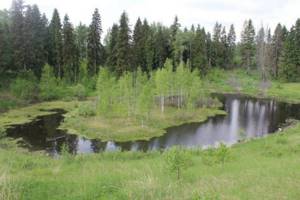
- Coordinates: 56.321286, 38.667793.
Previously, these places were inhabited by Finno-Ugrians, who made bloody sacrifices to their gods. The filthy tub was one of these altars. Today this is one of the most anomalous zones in the Vladimir region.
It is a round funnel, the edges of which are overgrown with grasses and trees of the most bizarre shape. In the center of the funnel there is a small lake with an island. Now it is swampy, but before, according to the stories of the old people, it was much larger and cleaner. The water in it appeared and disappeared, as if being sucked into the surface of the earth.
Birds rarely fly here, and animals try to avoid this place. Even the compass needle deviates to the side or completely freezes in place near the Filthy Tub. People believe in mysticism, but scientists explain the anomalies in their own way. The crater is just a trace of a fallen meteorite, and strange phenomena occur due to deposits of heavy metals in the bowels of the earth.
Veretyevo tract
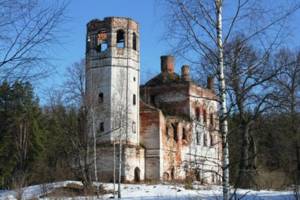
- Coordinates: 60.418667, 38.708873.
Kameshkovsky district is an ancient land that previously belonged to one of the guardsmen of Ivan the Terrible. Strange things always happened here, connected with devilry. Veretyev Pogost is one of the most mystical places. There used to be a village here, but it was abandoned in the middle of the last century. Today only the ruins of an old two-story church and a small ancient cemetery remain.
If you believe the legends, in ancient times there were pagan temples dedicated to the goddess Mokosh. It was here that bloody sacrifices were made and orgies and crazy games were held for procreation. To remove bad energy from these places, the Orthodox Church was built, but apparently its goodness was not enough, since strange things continue to happen today.
Black swamp
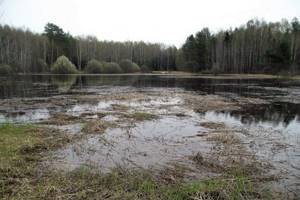
- Address: Selivanovsky district.
In the Selivanovsky district there is one of the most terrible places - the prodigal Black Swamp. Even local residents are afraid of him, because taking a wrong turn in these places costs nothing at all. Grass has not grown here for about half a century, and strange balls often appear hanging above the treetops.
Lake Sakantsy
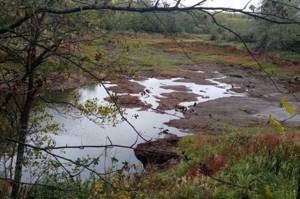
- Coordinates: 56.175326, 41.941110.
October 20, 2021 The Vladimir region has become poorer by one lake. It just went completely underground, along with the fish and algae. Now only a deep funnel with a silted bottom reminds of it. Sakantsy was an amazing and unique lake. Its depth in some places reached 20 m, and the diversity of the underwater world was amazing.
True, such anomalies are not uncommon for the region. There are bodies of water that appear and then disappear again. It's all about karst sinkholes in the earth's crust, which began to form less and less, unlike the 20th century, when huge forest areas went underground.
Perunya mountain
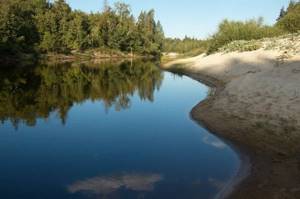
- Coordinates: Perovo village, Gorokhovetsky district.
This place, dedicated to the Slavic Thunderer, was first mentioned in the chronicles of the 12th century. But it was known much earlier. If you believe ancient legends, the Magi sailed past her on their boats, heading to the burial place of Yarila, the pagan god of the Sun.
Christians built a beautiful wooden church on the top of the mountain and consecrated it in honor of Silouan of Athos. Throughout its existence, it has attracted lightning strikes.
The Slavs thought that Perun was angry at people for forgetting their gods, but now it is clear that the church, being at the highest point, simply served as a lightning rod. The temple has not survived to this day, but Perunya Mountain is a very beautiful and picturesque place even without it.
Holy spring in Gorokhovets

- Address: Gorokhovets, Proletarskaya street.
The holy spring not far from the Holy Trinity St. Nicholas Monastery appeared during the Tatar-Mongol invasion. Then it was at this place that the image of the Russian hero arose before the enemies, putting the nomads to flight.
Since then, spring water has been healing the sick and suffering. The source is located in the Gorokhovetsky district on Puzhalovaya Mountain, at a 100-meter altitude. A staircase carved right into the rock and a narrow path lead to it.
Nerl River
The Nerl is the left tributary of the Klyazma. Location: Ivanovo, Yaroslavl and Vladimir regions. Characteristics:
- Length 284 kilometers;
- reservoir area 6,780 sq. To.;
- mixed type of nutrition;
- the average water consumption is almost 26 cubic meters. m/s. 100 thousand m from the mouth.
On the territory of the confluence with the Klyazma in the coastal zone there is Bogolyubovo and the Church of the Intercession of the Virgin. The upper reaches of the Nerl are very picturesque: the high hilly banks are covered with mixed and coniferous forest. The middle part of the river also flows past forests, but in this area there are significantly fewer of them. The final section is located on open meadow banks, with virtually no forest. Left-hand tributaries: Zimenka, Poshma, Pechuga, Ukhtoma, Sinyukha, Ryumzha, Krapivnovka. Right-sided: Jaundice, Ulovka, Toshma, Irmes, Seleksha, Pokolyayka.
General information about the nature of the Vladimir region
The Vladimir region is located in the European Russian Federation, stretching from east to west.
Its neighbors are the Moscow, Yaroslavl, Ryazan, Ivanovo and Nizhny Novgorod regions. The region occupies 29 thousand sq. km. The region is an ancient historical city of Russia, containing many extraordinary churches and architectural monuments. The natural landscape is rich and diverse. Nature is represented by beautiful contrasting reliefs: the powerful forests of the south of the region contrast with the famous northern Vladimirsky Opole, the flat swampy terrain of the southwest - the Lukhsky Polesye in the northeastern part of the region.
Lybid River
One of the left tributaries of the Klyazma. The length is 4500 m. In ancient times, Lybid was a deep spring, ships moved through it. Start in Voronova Hollow (University Street). The natural channel of Lybed is located in the upper river section, length - one km. 300 m. On the street. Streletskaya, the length of the concrete collector (in which the river passes) is 2 km. 500 meters. Passes under the streets: Verkhnelybidskaya, Z. Borovok, lane. Yuryevsky, Lineinaya. After which Lybid leaves the collector structure, in this part the natural channel has a length of 700 meters. In an earlier period of the river. Lybid had a deeply cut river valley with artificial barriers and earthen ramparts. At present, Zalybedye is a platform for the construction of buildings and residential premises. In 97 of the last century, a project was created in the river valley to build a highway that would pass through the center from the north.
Map of fishing spots
The Oka River is a place known to many fishermen, since this river is considered one of the most important in the region and region. Since it is quite close from the river to the city itself, you can often meet vacationers and local fishermen on the banks of the reservoir. The proximity of the location to the central city leaves its mark.
In this river you can find quite a large number of different fish. Most often, fishermen's catches include pike, silver bream, carp, bream and roach. There is a lot of bleak in the pond. This fish is an excellent food source for predators, so fans of spinning fishing can catch large pike and large perch. Experienced local fishermen often catch catfish.
Among the fishermen of this region there is also constant talk about the Klyazma River. Despite the fact that it is not very different from the Oka, they fish there too. Basically, in the catches you can find similar fish that bite on the same gear. But sometimes the lucky ones manage to catch a sterlet. It is prohibited to catch this fish, so if you are lucky enough to catch such a specimen, you must certainly release it back.
A large population of golden bream is a feature of this river. Bream is a fairly large fish that received the prefix “golden” due to its color, which has an incredible resemblance to precious metal. Large perch, dace and burbot can also be found in this reservoir.
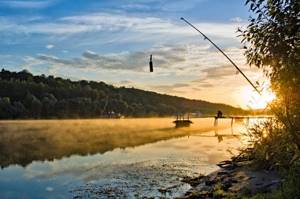
Sodyshka River
Sodyshka, or otherwise called Sautishka, flows in the Sobinsky district, the outskirts of the north-west of Vladimir and the Suzdal region. Refers to the type of smallest rivers. The length is 22 thousand meters, the area is almost 83 square meters. km. The initial section of the river is located near the Semenovsky village, flows in an eastern direction, crossing Spasskoye, to the Vladimir reservoir (outskirts of the west). After this, Sodyshka turns in a northerly direction, flowing along the village. Snovitsa and mixes with Rpenya. The final section is located 18 kilometers on the right bank of the Rpen. The source is represented by a collection of springs, the location of which is the forest ravine of Sergeeva Mountain (former village of Shchegolikha). settlements located on the banks: Nemtsevo, Seltso Nizhneye and Verkhneye, Vladimirovka, Snovitsy, Oborino. The river is fed by about ten streams, Chechera, Baburovka, Vzderinoshka. Description of the pool The reservoir is inhabited by bream, carp, ide, pike, crucian carp, and perch. Gray herons, black-headed gulls, waders, and ducks live near the pond. The bottom is overgrown with dark green hornwort and aquatic buttercup; the bank is overgrown with sedge, reeds, canary grass, and riverine horsetail.
Productive fishing on the Oka
The Oka River flows through most of the region, however, it is not considered popular among fishermen. Despite the fact that you can quickly get to the fishing spots, you won’t find a large number of fishermen on the banks. Experts do not find an explanation for this fact. They say that there are different types of fish in the river:
- som,
- crucian carp,
- asp,
- carp,
- zander,
- roach,
- bleak,
- pike.
It is worth noting that the Oka River is famous for its abundance of predatory fish. This is due to the abundance of bleak. This small fish serves as food for predators. Most often, catfish bite in the river. In the Oka there are very large specimens, weighing up to 10 kilograms. For catching catfish, spoons and wobblers are most often used. If you want to catch very large catfish, then you need to choose large spoons, which in their appearance resemble bleak.
Fishing for bream in Oka can be very productive. Most often, a ring is used to catch fish from a boat, but some fishermen prefer feeders. They say that crucian carp also bite well on this tackle. If you fish from the shore, it is better to choose a regular float rod.
Oka has always been famous for the presence of pike perch. Choosing a place to catch a predator is not so easy. Pike perch are most often found in great depths, so it is difficult to catch them in shallow water. It is best to fish from a high bank or from a boat. Pike perch chooses pools for permanent habitat. Only in the early morning does it rise to the surface, choosing the location of the bleak.
In recent years, many paid fishing spots have appeared on the Oka. They are popular among beginners. There you can not only rent a boat, but also get a lot of information about choosing gear. And also at paid bases they constantly feed the fish, which ensures a good bite.
Flora of the Vladimir region
For a long time, the vegetation of the Vladimir region has undergone serious changes. Nowadays, the vegetation is mixed, largely represented by forests. Among all the regions of the Central Federal District of Russia, the Vladimir region is one of the richest in forests.
Among the species growing in forests, the leading place belongs to conifers - they occupy slightly more than half of the region’s territory. A third of the forests are small-leaved, a tenth are zonal broad-leaved forests. The most common trees in forests are pine, birch, spruce, and aspen. The total forest area is more than one and a half million hectares.
The area is rich in vascular and bryophyte plants. Among them there are also those that are listed in the Red Book, for example: real slipper, fingerroot, Lezel's liparis, burnt orchis and others. There are also common medicinal plants, such as St. John's wort, mint and others.
Minerals of the Vladimir region
The soil of the Vladimir region cannot boast of an abundance of minerals. The available resources are represented by marine sediments left over from when the seas flooded this area at different periods of time. Other fossils include lake and swamp sediments and clastic rocks.
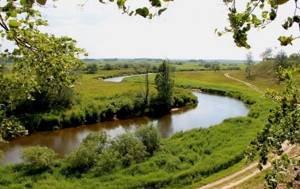
The most common resource is clay. Brick, cement and fire-resistant clay is mined in this region. At the same time, clays of the first type are found throughout the region, and the rest only in such areas as Gus-Khrustalny and Sudogodsky.
The building stone dolomite is widely represented, used in the creation of materials with fire-resistant qualities. They also fertilize soil that lacks calcium and magnesium.
The region is rich in different types of sands. Of all the types, construction sand is the most represented; in the past there was also a lot of quartz and glass sand.
The region is one of the leaders in peat extraction; there are more than a thousand deposits in total.
There is also gravel in the region, which is most often mined from river banks. In some areas there are small reserves of gypsum.
Alexandrovsky district has mineral springs.
Soil diversity of the Vladimir region
The following types of soils are found in the region:
fertile dark-colored carbonate, found in the forests of Opole gray forest, found in the same area
turf alluvial, found near the banks of the largest rivers
soddy-podzolic, subdivided into medium loamy, sandy loam and sandy types and found in coniferous and mixed forests
podzolic-bog and bog species, found in the area of the Gorokhovets bogs and Meshchera
It should be noted that soils contain insufficient amounts of boron and sulfur.
